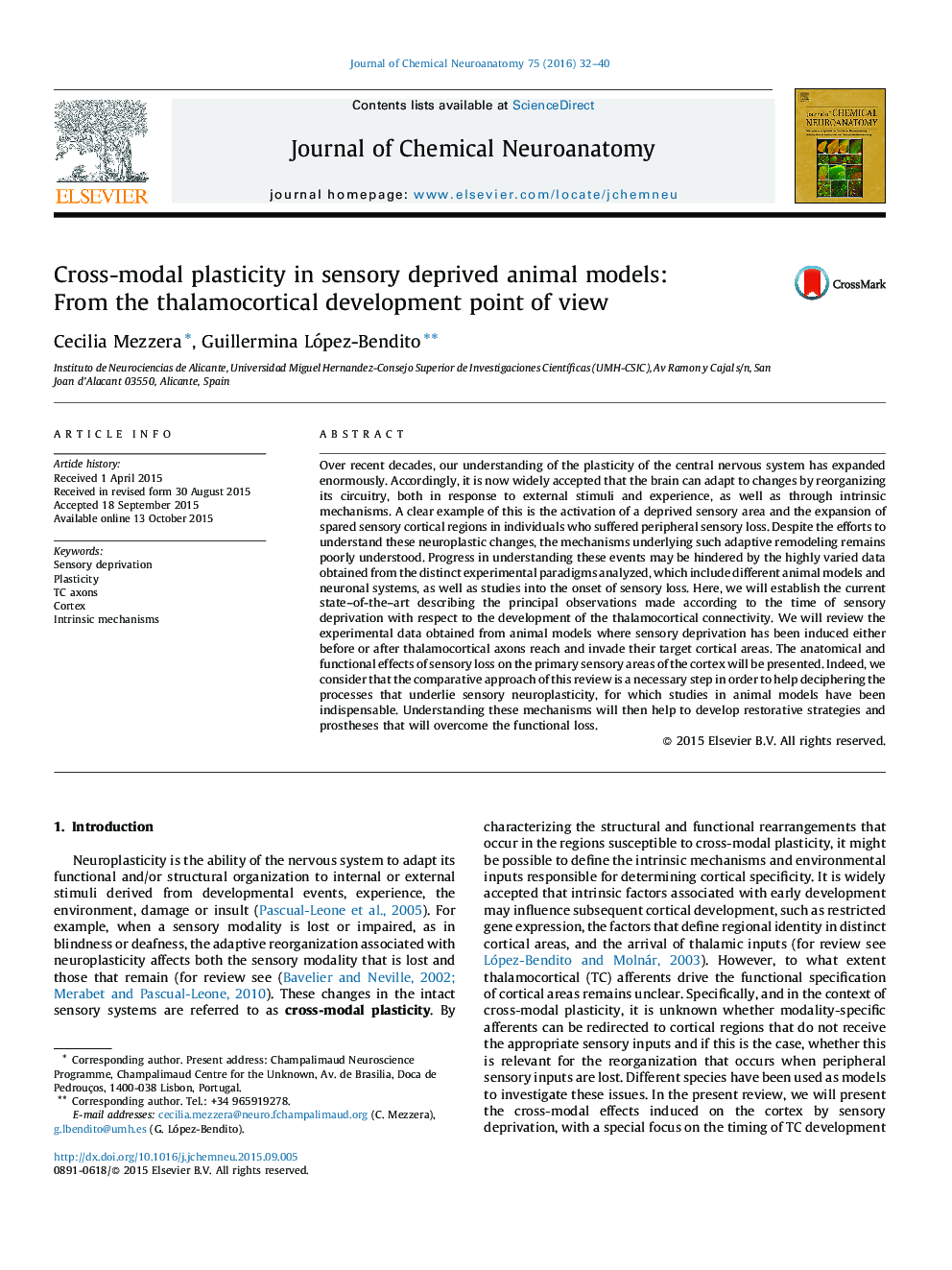| کد مقاله | کد نشریه | سال انتشار | مقاله انگلیسی | نسخه تمام متن |
|---|---|---|---|---|
| 1988683 | 1063522 | 2016 | 9 صفحه PDF | دانلود رایگان |
• Cross-modal neuroplasticity is a general mechanism found in vertebrates.
• The amount of cross-modal plasticity varies depending on the timing and degree of input deprivation.
• Input deprivation before thalamic axons enter the cortex triggers greater adaptations.
Over recent decades, our understanding of the plasticity of the central nervous system has expanded enormously. Accordingly, it is now widely accepted that the brain can adapt to changes by reorganizing its circuitry, both in response to external stimuli and experience, as well as through intrinsic mechanisms. A clear example of this is the activation of a deprived sensory area and the expansion of spared sensory cortical regions in individuals who suffered peripheral sensory loss. Despite the efforts to understand these neuroplastic changes, the mechanisms underlying such adaptive remodeling remains poorly understood. Progress in understanding these events may be hindered by the highly varied data obtained from the distinct experimental paradigms analyzed, which include different animal models and neuronal systems, as well as studies into the onset of sensory loss. Here, we will establish the current state–of-the–art describing the principal observations made according to the time of sensory deprivation with respect to the development of the thalamocortical connectivity. We will review the experimental data obtained from animal models where sensory deprivation has been induced either before or after thalamocortical axons reach and invade their target cortical areas. The anatomical and functional effects of sensory loss on the primary sensory areas of the cortex will be presented. Indeed, we consider that the comparative approach of this review is a necessary step in order to help deciphering the processes that underlie sensory neuroplasticity, for which studies in animal models have been indispensable. Understanding these mechanisms will then help to develop restorative strategies and prostheses that will overcome the functional loss.
Journal: Journal of Chemical Neuroanatomy - Volume 75, Part A, September 2016, Pages 32–40
